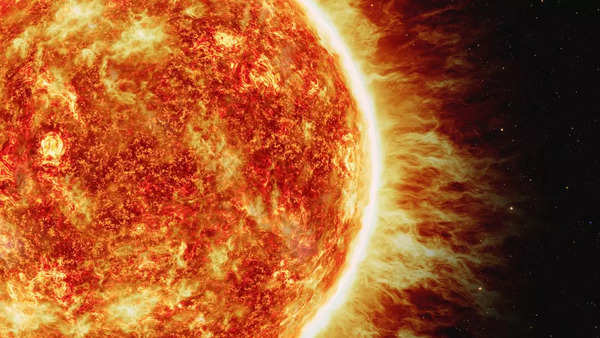Our Sun is currently in the prime of its life, categorized as a main sequence star.This phase is characterized by the nuclear fusion of hydrogen atoms into helium in its core, a process that releases tremendous amounts of energy. This energy is what we perceive as sunlight, a constant stream that has bathed our planet for billions of years. The Sun has been shining for about 4.6 billion years and is expected to continue for approximately another 5 billion years.
Solar storms, on the other hand, are temporary disturbances on the Sun’s surface, which can eject particles and electromagnetic waves into space. These storms are associated with sunspots and solar flares, which can indeed affect Earth’s magnetosphere and technology. However, they do not influence the Sun’s long-term energy output or cause it to cool down. The Sun’s brightness and temperature are determined by the nuclear reactions in its core, not by surface phenomena like solar storms.

Representative image of a solar storm.
The Sun’s life cycle is well-understood by astronomers. After exhausting the hydrogen in its core, the Sun will expand into a red giant, eventually shedding its outer layers and leaving behind a white dwarf – a dense, cooling remnant of a star. This transformation will not occur suddenly but will unfold over billions of years. Solar storms, while powerful, are merely fleeting events that cannot alter the Sun’s fate or hasten its end.
As for the cooling of the Sun, it is a process that will take place over an incredibly long timescale. Once the Sun becomes a white dwarf, it will indeed cool gradually over trillions of years, fading into obscurity. But this is an eventuality that lies far in the future, beyond any human timescale.
So to put it straight, the Sun is not a dying star in the sense that it will cease shining anytime soon. It remains stable and will continue to do so for billions of years. Solar storms, although dramatic, have no lasting impact on the Sun’s life cycle or its temperature. They are part of the Sun’s normal activity and, while they can create spectacular auroras and sometimes disrupt our technology, they do not signify the cooling or dying of our star.
Shocking: U.S. Senator Lindsey Graham Calls For Nuclear Attack On Palestinians

